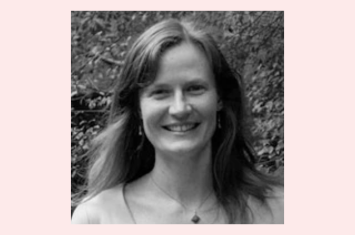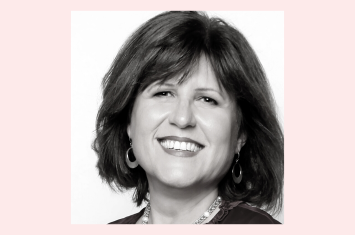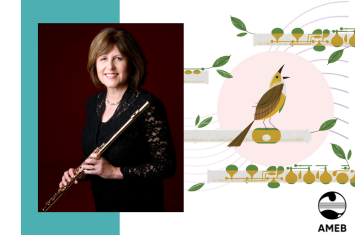
Australian composer Carolyn Morris, based in Melbourne (Naarm), creates music to ignite the imagination of performers and listeners, often drawing inspiration from nature to convey the essence of the human spirit. Carolyn trained in oboe and piano at the Victorian College of the Arts; she expanded her skills through Kenja Communication Training, enhancing creativity by addressing communication energies.
Carolyn has performed on oboe with the Australian Philharmonic Orchestra, the Chamber Orchestra at St Paul's and Alpha Sinfonia. As an accompanist, she has played for the Melbourne Theatre Company and the Australian National Academy of Music, as well as oboists such as Diana Doherty, Anne Gilby, Gordon Hunt and Maurice Bourgue. Carolyn is a pedagogical artist with the Australian Music Centre and AMEB, commissioned for the 2017 Oboe Sight-reading publication. Carolyn's compositional work has also been selected for the 2023 release of AMEB's Flute Series 4 Grades 5 & 6 grade books.
Key themes: composition, compositional approach, nature, natural world, inspiration, communication, interpretation, igniting joy, ballroom dancing
What is your approach to composing music, and what are the primary sources of inspiration?
My approach to composing is to decide on the purpose of the piece I'm writing and what I want to communicate. Suppose I'm composing for a particular player, ensemble or choir. In that case, I think about what music would be enjoyable and inspiring for them and their future audience and also provide enough of a challenge to be satisfying to learn and perform.
A lot of my music is related to nature, but the source of inspiration could be anything interesting and exciting.For example, I have been fortunate to learn ballroom dancing and have composed music inspired by this: Oboe Tango and a Flutango. The rhythms and harmonies of jazz and Latin music have also influenced some of my pieces, such as Oboe Blues, Bossa Nova (from my wind quintet), Bassoon Boogie, and Jazz Waltz (for flute and piano).
How does the natural world inspire your compositions? Can you share an example of this in your work, such as the Jacaranda Suite?
Music is a very powerful form of communication that can reach people in a way that words sometimes cannot. I aim to compose music that leaves people feeling better and, hopefully, lighter in some way, much like visiting a beach or a walk in a park or forest can leave us feeling lighter and happier. I often aspire to communicate this inherent human connection to nature in my music. This experience of being in nature can unite us and remind us that we're all part of something much bigger than our individual lives.
JACARANDA SUITE:
I love Jacaranda trees, so this was an obvious source of inspiration for this piece. The 1st movement, 'Jacaranda Skies,' is a reflective and lyrical piece depicting these trees' elegance and beauty. The 2nd movement, 'Birdsong', is light and playful and shows off the qualities of the flute that are very similar to birds singing. The 3rd movement, 'Beyond the Forest,' has a quality that reminds me of walking into a forest and becoming aware of something magical there, such as forest fairies. The 4th movement, 'Ride of the Brumbies', is a rollicking piece that is in part inspired by Banjo Patterson's "The Man From Snowy River" and the film of the same name. Whilst the music isn't necessarily similar to Bruce Rowland's iconic soundtrack, the imagery and energy of the story and his music have influenced this piece.
How has Kenja Communication Training influenced your approach to music in performing and composition? Can you provide some insights into this method or approach?
One of the main things I have gained from Kenja communication training is an awareness of time, space and energy. These are primary factors in effective communication. Creating anything original requires being fully in the present moment and not distracted by thoughts of the past or future.
'Space' refers to being aware of the entire space you're performing in and extending your consciousness into that space. It also includes your ability to appreciate and experience different realities so that you are not stuck on one's own reality. I find that internalisation can be a regurgitation of negative thoughts. But expanding beyond oneself puts one in touch with the stimulus and creation of so many other people.
'Energy' refers to the subtle wavelength of energy or emotion that accompanies communication, particularly with music. It also enables us to touch the 'human spirit', that childlike quality we all share. Going beyond race or creed - it's the common factor that we are all part of the family of man. And that's who I am sharing with - everybody.
To effectively reach a listener or audience requires addressing these three factors.
As young children, we have these skills naturally - to reach out to others in the present moment and communicate with energy. We can lose these abilities as we grow up, become self-conscious or uncertain of ourselves, and perhaps mistrustful of others. Fear of being judged and similar factors can result in people reducing their awareness to a smaller space where it's hard to reach the audience effectively.
As a result of understanding these communication elements, I am much more conscious of what effect I choose to create with my music. I have increased skills in getting my message across effectively and am aware that I have a responsibility to leave the audience better off from my communication.
It is also possible to create harmonics in the space with energy and pictures that complement the sound harmonics of the music. Something that I aspire to achieve.
How does your desire to spark the performer and listener's imagination inform your compositional choices? Can you provide some specific examples of how you achieve this in your music?
When I compose music, I aim to paint a picture or tell a story (like a forest walk or people dancing) that creates an avenue for the performer to communicate through their interpretation. I might have specific ideas in mind with different passages in the music, but I may not always write this on the score to give the performer the freedom to interpret the music through their expression.
A natural progression is that the audience will receive the communication and pictures of the music, and in turn, their imagination becomes activated.
One of my goals is to elevate people to a level of awareness where there is stillness outside everyday thoughts and worries.
Can you share an example of when you felt your music had a particularly uplifting effect on an audience? What made this experience so memorable for you?
I have composed a number of choral works, including commissions for St Leonard's College- Melbourne, St Peter's College- Adelaide, and the Suzuki Voice Australia Conference, amongst others. These works include Flying Up Higher, Be a Light in the World and A Song to Light the World.
As you can guess from the titles, these songs are all intended to uplift and motivate students, teachers and audiences. There is something compelling about large choirs singing together as one. It can be very unifying for the performers and audiences.
I was excited to experience the premiere performances of these works, where the choirs communicated the intention of the lyrics and music with a lot of unity, energy and life force. This had a fantastic, uplifting effect on the audiences, which was very satisfying for the performers, conductors and myself as the composer.
There are so many influences in our society that are very destructive to the survival of young people and the human spirit in general, ranging from excessive exposure to electronics to the increased promotion of drugs and alcohol.
I am always reassured when young performers can create hope in the environment through music that lifts them above mediocrity and creates aspirations for great achievements in their lives.
I hope to continue contributing to this action through the music I compose.




